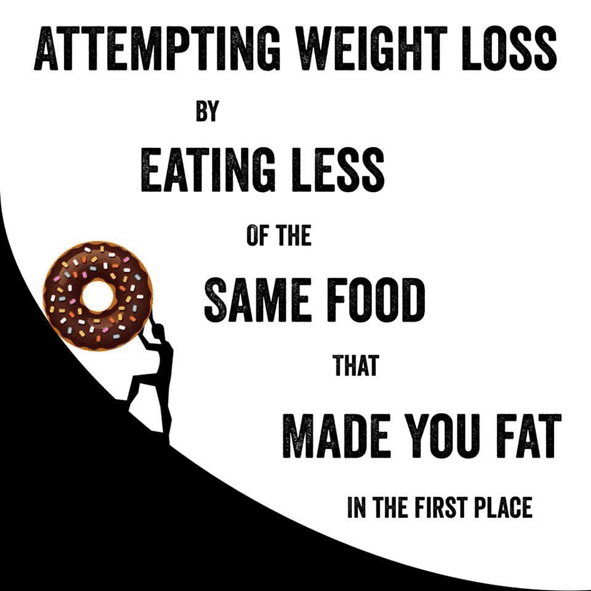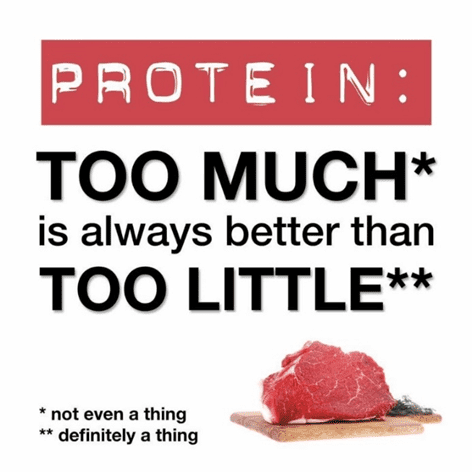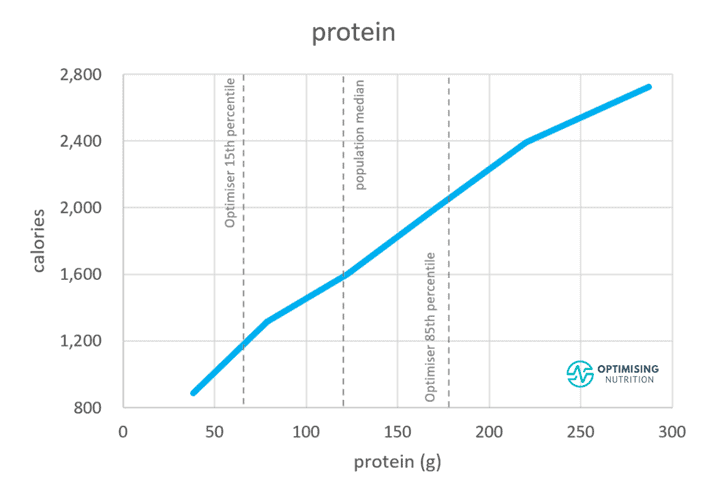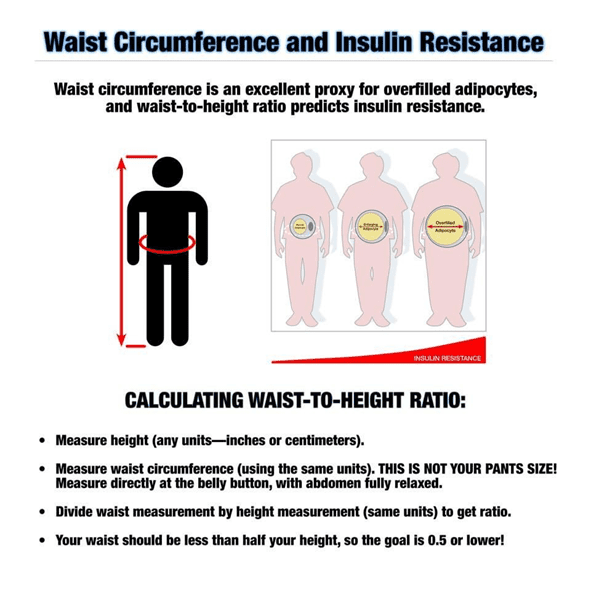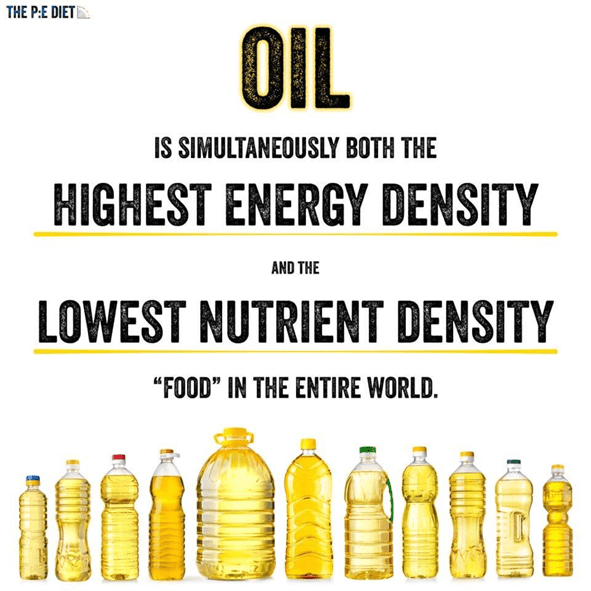There is plenty of controversy and confusion around finding the balance between macronutrients (i.e. protein, fat and carbs).
This section of the FAQs outlines the data-driven approach we use in the Macros Masterclass to cut through the noise to help Optimisers get the desired results.
- Why Don’t We Start with a Calculated Calorie Target?
- Are All Calories Created Equal?
- What Is ‘Satiety’?
- Is There a Minimum Protein Intake That I Should Aim For?
- Can I Eat “Too Much” Protein?
- Do I Need to Increase My Protein Intake to Lose Weight?
- How Do I Calculate My Protein Intake in g/kg LBM?
- How Much Protein Should I Consume?
- Do I Always Need to Hit My Minimum Protein Target?
- Is a Higher Protein % Better?
- What About Rabbit Starvation?
- If a Higher Protein % Is Better for Rapid Weight Loss, Shouldn’t I Start as High as I Can?
- Are Carbs Better or Worse Than Fat?
- Should I Reduce My Carbohydrate Intake?
- Should I Reduce My Dietary Fat?
- Is It Better to Reduce Carbs OR Fat?
- What Macro Combination Makes Us Eat More?
- Should I Eat More Fat or More Carbs?
- Is No-Carb Better Than Low-Carb?
- Do I Need to Worry About Fibre?
- Why Do You Track Net Carbs Rather Than Total Carbs?
- Is It True That ‘There Is No Such Thing as an ‘Essential Carbohydrate’?
- Is There a Minimum Fat Intake?
- Should I ‘Eat Fat to Satiety’?
- Do You Recommend a Particular Macronutrient Split?
- How Do I Eat Less Fat While Still Hitting My Protein Target?
- More
Why Don’t We Start with a Calculated Calorie Target?
Many weight-loss challenges start with a fixed calorie target, calculated based on your current weight (and maybe your body fat percentage, if you’re lucky).
Sadly, these calculated cookie-cutter macro and calorie targets can be grossly inaccurate. This is because individual differences in activity levels, muscle mass, age, and a range of other factors all play a role in the energy that your body requires.
If your calculated calorie target is too high, you won’t lose weight. On the other hand, you won’t be able to meet your overly restrictive calorie goal for long if it’s set too low. In this situation, you are likely to rebound bing, feel like a failure, and give up before achieving your goal.
Simply restricting calories without changing WHAT you eat will lead to poor satiety per calorie and increased hunger. Once you establish your baseline calorie intake, we want to ensure you’re getting enough protein before you try to dial back energy from fat and carbs.
Many people find they eat less and start to lose weight by simply becoming more conscious of what they’re eating when they track their food. This powerful phenomenon where people change their behaviour when observed is known as the Hawthorne effect.
So, although we don’t want you to restrict calories during the first week, what you will eat during baselining is likely the best version of your innate and current eating routine.
Are All Calories Created Equal?
In the Macros Masterclass, we want you to think about your food in terms of nutrients vs energy that comes from fat and non-fibre carbohydrates.
The infographic below shows how various foods rank on this spectrum – imagine egg whites and protein powder at one extreme, with doughnuts, pizza and croissants at the other.
- If your goal is fat loss, you need to reduce energy from fat and non-fibre carbohydrates while still consuming adequate nutrients (i.e. amino acids, vitamins, minerals, and omega-3 fatty acids).
- To gain weight or fuel large amounts of activity, you need to increase your energy intake from fat and non-fibre carbohydrates while getting adequate protein and nutrients.
The amino acids that makeup protein can be used for energy. However, it’s difficult for your body to convert them to adenosine triphosphate (ATP) or the energy currency used by your cells.
Therefore, the calories from protein shown on nutrition labels are based on the energy released if you burn the protein in a bomb calorimeter. However, your body does not burn food, especially protein.
The protein in the food you eat is used for many functions in your body other than energy production, like repairing and rebuilding muscle, making neurotransmitters, and synthesising enzymes.
Protein not required by your body can be cleared by your kidneys and excreted in your urine. Your body will only use protein for energy in an emergency if not enough energy comes from fat and carbs.
Even if your body needs to use dietary protein or protein stored in the muscles on your body for energy, less of the calories from the protein will be converted to energy. An estimated 25 – 35% of protein’s energy (calories) is lost when the body converts protein to usable energy.
Some people talk about the ‘meat sweats’ or the warm feeling they get when they eat a lot of protein. In contrast, you may feel cold if you go without any food or adequate protein for a long time.
If you want to get a bit nerdier, the table below shows more detail for each energy source in terms of:
- oxidative priority,
- approximate capacity to store these various fuels, and
- their thermic effect.
| Alcohol | Ketones | Excess Protein | Glucose | Fatty Acids | Body Fat | |
| Priority | 1 | 2 | 3 | 4 | 5 | 6 |
| Use | Energy | Energy | Energy and excretion | Energy | Energy | Storage |
| Capacity (calories) | 20 | 20 | – | 1200 – 2000 | 150 | 40,000 – 500,000 |
| Thermic effect | 15% | 3% | 20 – 35% | 5 – 15% | 3 – 15% | 3 – 15% |
So, although protein is not exactly a ‘free food’, it’s as close as it gets. Conversely, carbs and fat are more easily converted to energy or stored in your body. As a result, much smaller amounts of energy are lost in conversion and storage. See Oxidative Priority: The Key to Unlocking Your Body Fat Stores for more detail.
In the Micros Masterclass, we’ll guide you to think in terms of nutrients vs energy, which is an even more sophisticated approach.
What Is ‘Satiety’?
Satiety refers to how full you feel after eating. A satiating meal will leave you feeling fuller for longer.
While you can strictly count and restrict your intake of calories for a while, most people fail at this game long-term unless they also change WHAT they eat.
The opposite of satiety is known as hyperphagia (uncontrolled eating). We all know some foods we tend to eat a LOT more of, while a moderate amount of others keeps us full and satisfied for longer.
Our data analysis has focused on determining how various macronutrients and micronutrients influence satiety and the probability that you will eat more or less throughout the day.
The learnings from our analysis are baked into the Macros Masterclass and Micros Masterclass to make it as simple as possible for you to implement.
Is There a Minimum Protein Intake That I Should Aim For?
The minimum protein intake to prevent deficiency diseases is 0.8 g/kg body weight. Because protein correlates strongly with nutrient density, the Smart Macros algorithm recommends a minimum of 1.4 g/kg lean body mass (LBM).
The chart below shows that maximum nutrient density aligns with 50% of calories from protein.
You can use the table below to guide your minimum protein intake. You can also use our macro calculator. Be sure to set the protein slider to at least 1.4 g/kg LBM.
| height (cm) | height (inches) | female protein (g) | male protein (g) |
| 150 | 59 | 56 | 76 |
| 155 | 61 | 60 | 81 |
| 160 | 63 | 64 | 86 |
| 165 | 65 | 68 | 92 |
| 170 | 67 | 72 | 98 |
| 175 | 69 | 77 | 103 |
| 180 | 71 | 81 | 109 |
| 185 | 73 | 86 | 116 |
| 190 | 75 | 90 | 122 |
| 195 | 77 | 95 | 128 |
| 200 | 79 | 100 | 135 |
| 205 | 81 | 105 | 142 |
| 210 | 83 | 110 | 149 |
Unless you regularly practice extended fasting or you’re currently following a diet like therapeutic keto or plant-based vegan that actively avoids protein, most people find they already meet this minimum intake level. Rather than getting MORE protein, the challenge for most people is to get adequate protein while consuming less energy from carbohydrates and fat.
Can I Eat “Too Much” Protein?
Due to its strong satiety effect, it’s challenging to consume ‘too much protein’.
However, it is possible to consume too much energy in the pursuit of protein because protein typically comes with fat. The chart below shows that merely eating MORE protein (in grams) aligns with eating more calories.
It’s important to understand that satiety is not about eating MORE protein. Instead, it’s about increasing your protein % (i.e. the proportion of your total calories that come from protein) that makes the difference.
A higher protein % has the strongest correlation with satiety and overall nutrient density.
Tracking your food during the Macros Masterclass is a ‘necessary evil’ to understand your current diet and guide you towards the macronutrient split required to reach your goals sustainably.
Over four weeks, we will guide you through dialling in your food and meal choices and progressively balancing your protein and energy from carbs and fat. Each week, Nutrient Optimiser recommends new foods and meals that will enable you to get the protein you require without overconsuming energy.
You may find your absolute protein intake (in grams) naturally drifts up. At the same time, your fat and non-fibre carbohydrate intake should come down.
‘Excess’ protein intake is impossible if you also limit your total energy from carbohydrates and fat. Hence, you needn’t worry about consuming ‘too much protein’ if you’re maintaining a caloric deficit.
Protein overfeeding studies have shown that people don’t gain fat despite consuming up to 4.4 g/kg/day from protein powder if they’re not consuming excessive amounts of carbs and fat. This is because it’s difficult for your body to convert protein to glucose (gluconeogenesis) and then fat (de novo lipogenesis).
It’s unlikely that dietary protein will end up stored as body fat. If you’re eating more calories than you require, the fat in your diet gets stored as fat because fat is last in line to be used for fuel.
Do I Need to Increase My Protein Intake to Lose Weight?
In practice, increasing protein % tends to significantly decrease your overall calorie intake and modestly increase your absolute protein intake (in grams).
The chart below shows the typical relationship between protein %, protein (in grams), and total calorie intake. Moving from 15% to 50% protein aligns with:
- a total reduction of 800 calories,
- an increase in protein of 75 g (or 300 calories), and
- a reduction of 1100 calories from fat and carbs.
How Do I Calculate My Protein Intake in g/kg LBM?
While protein recommendations are often given in grams per kilogram of body weight or ideal body weight, g/kg lean body mass (LBM) is ideal because your lean mass (mainly muscle) requires protein.
Your lean mass is your total body weight minus your fat mass. Your fat mass is your weight multiplied by your fat percentage.
Lean Mass = Total Body Weight – Fat Mass
Fat Mass = Total Body Weight x Body Fat %
If you know your weight and body fat % from your bioimpedance scales or if you’ve estimated it from pictures, you can use our macro calculator to determine what different protein intakes (e.g. 1.4 g/kg LBM, 1.8 g/kg LBM, etc.) would look like for you.
How Much Protein Should I Consume?
Unfortunately, it’s impossible to give a one-size-fits-all protein recommendation.
Your protein requirement will depend on various factors, like your gender, age, activity levels, muscle mass, state of health, and current diet. However, the typical protein intake that your body craves is likely pretty close to what you need and hence a good starting point.
During the Macros Masterclass, we will guide you to find an adequate protein level for your goals and context. For reference, the chart below shows the distribution of protein intake (in terms of g/kg LBM) using data from our Optimisers.
- The median protein intake is 2.4 g/kg LBM.
- To the right of the chart, we can see that very few people get more than 7.0 g/kg LBM protein.
- On the left, we see that few people get less than 0.5 g/kg LBM.
- Only 15% of Optimisers get less than our minimum recommended 1.4 g/kg LBM.
Do I Always Need to Hit My Minimum Protein Target?
Consuming equal to or greater than 40% of calories from protein seems to be a sweet spot for sustainable weight loss to get enough protein without overconsuming calories.
While we suggest you get at least 1.4 g/kg LBM protein daily, some people experience minimal hunger once insulin levels decrease and they start losing weight.
If you are getting more than 40% protein and losing weight, there’s no need to stress strictly sticking to your minimum protein intake (i.e. 1.4 g/kg LBM). Instead, just enjoy the rapid weight loss while it lasts.
Is a Higher Protein % Better?
Most people want rapid results and are eager to throw out everything they do now and jump to the ‘best’ approach for rapid fat loss. But jumping from a low-protein % to a high-protein % overnight may not be ideal for success that can be maintained long term.
The chart below shows that a higher protein % aligns with a lower calorie intake. Protein % has the strongest inverse correlation with total calorie intake compared to any other metric in our analysis. Calorie intake decreases as protein % increases (and vice versa).
However, in your enthusiasm for rapid progress, you must be mindful that your body still needs some energy from your diet. While protein is critical for many functions in your body, it’s a poor fuel source, and your body can only release a limited amount of energy from storage each day. So, despite your willpower and discipline, you may end up with excessive hunger and find yourself rebound binging a few days later.
Your metabolism is like an elastic band that always wants to spring back to equilibrium: if you stretch it too much all at once, you’ll rebound harder.
What About Rabbit Starvation?
Some people talk about ‘rabbit starvation’, which can occur when lean people only have very lean protein sources (like rabbits). However, most of us have easy access to cheap food and carry much more energy than we need, so there is little risk of overeating lean protein and starving to death.
If a Higher Protein % Is Better for Rapid Weight Loss, Shouldn’t I Start as High as I Can?
We tend to gravitate to a moderate protein %. However, for weight loss, you should try to push a little above what is normal for you.
However, keep in mind that your body will want to spring back to its normal equilibrium by seeking energy from fat and carbs. The chart below shows that most people can’t maintain a very high protein %. While the average protein intake is 31%, only 15% of people can maintain a protein intake above 42%.
For this reason, we don’t want you to stretch your protein % too high too fast. You only need to get more aggressive if you stop seeing results for a week or two.
In the Macros Masterclass, we will guide you to determine your current protein % and sustainably tweak your macro targets weekly.
These incremental changes are designed to limit excessive hunger and rebound binging and allow more room to move later if you need to keep dialling things in.
Are Carbs Better or Worse Than Fat?
Most dietary camps draw their battle lines around whether they prefer carbs or fat, which often turns into plants vs. animals.
Ironically, our analysis shows that reducing non-fibre carbs OR fat reduces overall calorie intake. That’s why both low-carb and low-fat camps are successful when they move away from similar hyper-palatable blends of fat and carbs that are easy to overeat.
Should I Reduce My Carbohydrate Intake?
Carbohydrates are a fast-burning fuel that you may need more of if you are active and perform a lot of explosive exercises.
However, if your blood sugars elevate and rise more than 1.6 mmol/L (30 mg/dL) after you eat, your carbohydrate fuel tank is already overflowing. Therefore, you will likely benefit from consuming fewer carbs. You don’t need more carbohydrates as you already have plenty on board. High intakes of refined carbohydrates also lead to blood sugar crashes that stimulate appetite to ensure we restore blood sugars to their normal levels.
In the Macros Masterclass, we will guide you through dialling in your carbohydrate intake to achieve healthy blood glucose levels that won’t lead your blood glucose crashing to the point where you feel overly hungry.
Should I Reduce My Dietary Fat?
A waist-to-height ratio of greater than 0.5 or waking blood glucose levels greater than 100 gm/dL (or 5.6 mmol/L) are indications that you would benefit from reducing your dietary fat to lose body fat. Because fat is so energy-dense, it’s the easiest macronutrient to manipulate to get the most significant reduction in calories. After dialling in your protein and carbs, we will tackle fat in the final week of the Macros Masterclass.
In the Macros Masterclass, once you have adequate protein and have found your carb limit, we focus on leveraging your fat intake to ensure your overall calorie intake aligns with your goals.
Is It Better to Reduce Carbs OR Fat?
While carbohydrates primarily influence the rise in blood sugars and insulin in your diet, the time it remains above your normal is influenced mainly by dietary fat. In other words, carbs are more inclined to spike your blood sugars initially following a meal, whereas fats are more prone to keeping them elevated for longer.
Optimising blood sugars, insulin, and body fat levels is simply a matter of dialling back dietary carbs and fat while still getting adequate nutrients, especially amino acids from protein.
As shown in the chart below, reducing the area under the curve of your glucose and insulin response to the food you eat is a matter of reducing carbs (to reduce the rise in blood glucose) and fat (to allow your blood glucose to drop sooner).
As long as you’re getting adequate protein and your blood sugars are in a healthy range, it doesn’t matter whether you get more of your fuel from fat or carbs. You can find the mix that suits your preferences and lifestyle.
What Macro Combination Makes Us Eat More?
The chart below shows that the ‘secret’ to cracking the satiety code is that foods that predominately combine fat and carbs align with the lowest satiety and overeating. Conversely, dialling back fat and non-fibre carbs aligns with increased satiety and a higher nutrient density.
- If your goal is weight loss, we will guide you to move to the left of this curve to increase satiety during the Macros Masterclass.
- Conversely, if you want to grow or fuel large amounts of activity, you want to move towards the right of this curve to increase energy from fat or carbohydrate.
Foods that are a combination of fat and carbs are rare in nature, except perhaps in autumn when we need to fatten up for impending winter.
Before agriculture and food processing, we would have had more carbohydrates available in summer (i.e., a low-fat diet) and more fat and protein in winter (i.e., a low-carb diet). However, in spring, we find lean protein sources and fibrous plants (i.e., similar to a protein-sparing modified fast).
Foods such as nuts and breast milk, which combine fat and carbs in similar ratios, tend to be rare in our natural environment and ideally suited to help us grow and quickly gain fat. However, because we love to consume and purchase these foods, the processed food industry has created an infinite autumnal food environment to maximise profits and give us what we think we want (but not what we need).
As shown in the chart below, ultra-processed foods tend to be lower in protein. So, by prioritising protein, you will automatically eliminate the less-than-optimal ultra-processed foods.
For more details, see Carbs OR Fat vs Carbs AND Fat.
Should I Eat More Fat or More Carbs?
We don’t mind if you prefer to get your energy predominantly from fat or carbs.
Carbohydrates and fatty acids both store their energy as carbon-carbon bonds. However, fats are more compact and require more time to be broken down than carbs. You can think of fat as the more economical slow-burning diesel, while carbs are more explosive, like gasoline. But ultimately, both provide energy to your body in similar ways.
During the Macros Masterclass, you will progressively fine-tune your macros. If your blood sugars are elevated, the Smart Macros algorithm will guide you through dialling back your non-fibre carbohydrate intake. However, you will crave more carbohydrates if your blood sugars are in the healthy range and you do a lot of explosive activity.
It may be better to fuel with more fat if you do more endurance activity. However, if you want to lose body fat and stabilise your blood sugars, Nutrient Optimiser will guide you through dialling back fat and carbs while prioritising more nutrient-dense foods and meals.
Is No-Carb Better Than Low-Carb?
Although a lower-carb diet (e.g., 15% non-fibre carbohydrates) aligns with greater satiety than a diet with moderate carbohydrates (i.e., 45% non-fibre carbohydrates), as shown in this next chart, pushing your carbohydrate intake towards zero does not align with greater satiety.
Trying to eliminate all carbohydrates can lead to excessive fat intake. It also can negate the intake of bulky non-starchy vegetables that contain a lot of water and fibre that help provide greater satiety and nutrients that are relatively harder to find in protein and fat-rich foods alone.
Maximum nutrient density aligns with 10-15% non-fibre carbohydrates. So, unless you’re managing diabetes and your blood sugars still rise more than 30 mg/dL or 1.6 mmol/L after eating, there is little benefit in pushing your net carbohydrate intake to less than 10%.
Do I Need to Worry About Fibre?
Like protein, eating foods and meals containing more fibre aligns with greater satiety and a lowered calorie intake.
However, the satiety impact of protein is much more significant than for fibre. You’ll be getting plenty of fibre as you transition to nutrient-dense whole foods, so you won’t need to worry about supplementing with more.
Rather than prioritising fibre, it’s more helpful to focus on ensuring that the carbohydrates you eat are fibrous. As shown in the chart below, we tend to eat significantly fewer calories when our carbohydrates comprise up to 40% fibre.
For more detail, see Dietary Fiber: How Much Do You Need?
Why Do You Track Net Carbs Rather Than Total Carbs?
“Net carbs” refers to the total carbohydrates minus the fibre in your food.
Net Carbs = Total Carbohydrates – Carbohydrates from Fibre
It’s hard to overeat foods that naturally contain a lot of bulk and fibre. Fibre doesn’t count towards your overall calorie intake because, for the most part, it isn’t digested in your gut to provide calories or significantly raise your blood sugar.
The chart below shows how thinking about net carbs can be more effective to dial in satiety. Moving from moderate to lower total carbohydrates aligns with a 21% reduction in calories. In contrast, decreasing net carbs instead gives us a more substantial 29% reduction in calories.
Is It True That ‘There Is No Such Thing as an ‘Essential Carbohydrate’?
You may have heard people say, “There is no such thing as an essential carbohydrate.”
While this is technically correct, your body does need some glucose.
If you only consume minimal carbohydrates, glucose can be synthesised from dietary protein. If you are not eating sufficient protein, your body can break your muscles down to supply its protein demands.
Fortunately, most people eat more protein on a lower carbohydrate diet. This protein can be used to make glucose for essential bodily functions that require it.
However, there’s no need to push to zero carbs at the expense of excluding non-starchy vegetables. These foods are excellent sources of vitamins and minerals that can be hard to find on a very low-carb diet.
Is There a Minimum Fat Intake?
Your body has an essential requirement of 1.6 g per day of omega-3 fatty acids and 13 g per day of omega-6 fatty acids. This adds up to about 15 g of fat, or 130 calories and 6.5% of your daily calorie intake. Your body also requires some fat for healthy gallbladder function.
While you require some dietary fat, the minimum requirement is small. As shown in the chart below, eating less fat aligns with a lower calorie intake.
Similarly, as shown in the chart below, there is no benefit in dropping your fat intake below 35% of total calories from a nutrient-density perspective.
Should I ‘Eat Fat to Satiety’?
You may have heard that you should ‘eat fat to satiety’ or that fat is effectively a free food because the insulin response is minimal. As much as we would like to believe that fat is a ‘free food’ (as it is SO delicious), the reality is that the satiety value of fat on a per-calorie basis is low.
If you are currently following a high-fat keto diet where 70% or more of your total calories come from fat, you may find that you need to dial back dietary fat to improve satiety and nutrient density and thus allow your body to use stored fat for fuel.
Do You Recommend a Particular Macronutrient Split?
The table below shows macronutrient ranges that align with greater satiety and nutrient density. Notice there is plenty of room for movement within these ranges to find the macro split that suits your goals and preferences.
| Macronutrient | Range |
| Protein | < 50% |
| Net carbs | 10 – 45% |
| Fat | > 30% |
Once you ensure you are getting 1.4 g/kg LBM protein, Smart Macros will guide you to dial in your macros to ensure you are moving towards your goals in the Macros Masterclass.
How Do I Eat Less Fat While Still Hitting My Protein Target?
Getting adequate protein while consuming less fat is one of the biggest challenges for many people. They are surprised by how much dietary fat they consume, especially if they’re already following a low-carb or keto diet.
To address this, the first step is avoiding extra added fat that hides in high-fat dressings, MCT oil, cream, and butter. Next, you should identify the foods and meals that provide most of your fat and progressively swap them out for leaner protein sources recommended by Nutrient Optimiser.
While this may sound simple, it can take some time to adopt new habits and make better choices based on the guidance of Nutrient Optimiser and the support of the Masterclass community.


